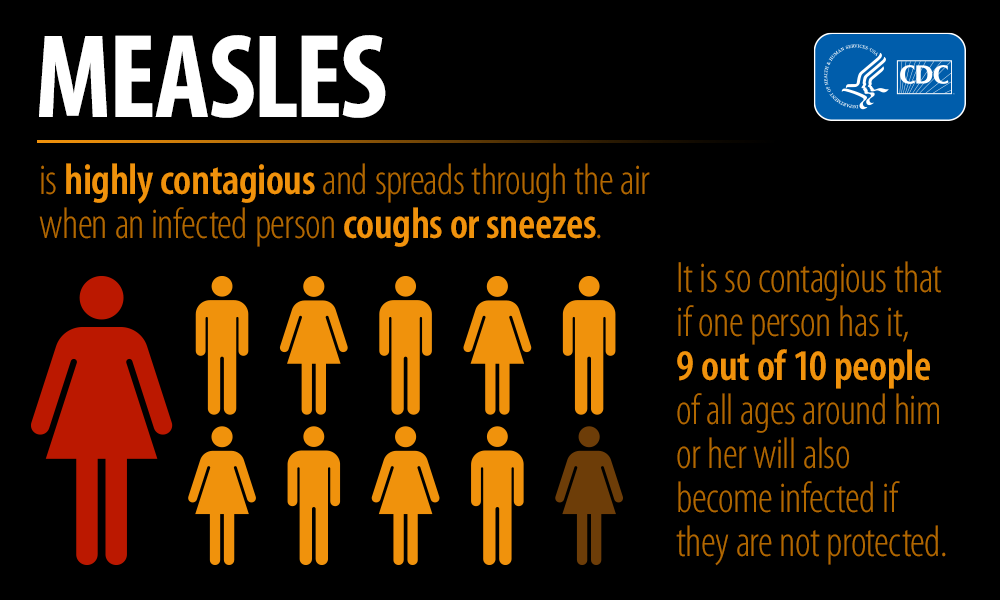NewsDesk @bactiman63
In a follow-up on the measles outbreak in Minnesota, The Minnesota Department of Health (MDH) is working with local public health agencies and health care providers in the Twin Cities area to investigate 13 cases of measles that occurred June through September among several different families with unvaccinated children.

Most of these children had a history of travel to a country where measles is common and circulating. The most recent case did not have a reported travel history, but investigators are still working to determine how transmission may have occurred.
All cases are in the Twin Cities area. The children have been as young as two years old to children in their early teens, and just over a third are pre-teen. Seven children were hospitalized for treatment of measles.
Minnesota’s 13 cases are several times greater than the number of cases the state sees in a typical year. The higher number of cases prompted health officials to alert health care providers to watch for signs of measles in their patients, especially those with recent travel to areas where the virus is circulating.
How contagious is measles? Answer: Very
The possibility that the most recent case could indicate that measles is spreading in the community prompted health officials today to urge parents to make sure their children are up to date on their childhood immunizations, which include the measles-mumps-rubella (MMR) vaccine.
“The measles virus is highly contagious and very successful at finding people who are unvaccinated, even within groups of people who may be vaccinated,” said Dr. Ruth Lynfield, State Epidemiologist. “Measles can be a very serious disease, causing hospitalizations and sometimes death. That’s why it’s so important to maintain high vaccination rates for measles.”
The MMR vaccine is safe and highly effective against measles, according to Jennifer Heath, immunizations program coordinator for MDH. Because the virus itself is so contagious, Heath said, an overall vaccination rate of at least 90% in our communities is needed to keep the virus from causing large outbreaks. Minnesota saw a 3% drop in school-age immunizations during the pandemic due largely to people not getting in for routine well-child-care visits.
“Even a small drop in the immunization coverage rate means there are thousands more children who could be vulnerable to disease because they are not vaccinated,” Heath said. “If the coverage rate in a setting like a childcare or school is significantly less than 85 or 90 percent, that’s an outbreak waiting to happen,” she added.
Overall, the risk to the general public from these cases is low, because most Minnesotans are vaccinated for measles through routine immunizations required for school attendance. Most of the children involved were isolated when symptoms started, so exposures were limited to health care and family settings. However, it just takes one case of travel-associated measles passing it to someone else in the community who is not vaccinated to start an outbreak in a community with lower vaccination rates, Lynfield said.
Any case of measles causes concern for health officials. Measles spreads easily by coughing, talking, or being in the same room with someone who has measles. Initial symptoms of measles include a high fever, cough, runny nose, and watery eyes followed by a rash that typically spreads from the head to the rest of the body. It generally takes 8 to 12 days from exposure to someone with measles to the first symptom, which is usually fever. The measles rash usually appears two to three days after the fever begins. If you have symptoms of measles, call your doctor or clinic and they will let you know if you need to come in for a visit.
Measles was declared eliminated in the U.S. in 2000, but it is still common in other parts of the world. In a typical year, Minnesota sees one to four cases of measles, generally in people who traveled to countries where measles is more common.
There are measles outbreaks occurring in many countries around the world and measles is common in other countries, so it is important for anyone from the U.S. traveling overseas to be vaccinated or have immunity against measles. in 2018, there were more than 140,000 measles deaths globally, mostly among children under the age of five.
Subscribe to Outbreak News TV on YouTube
“We need to maintain our high vaccination rates to make sure measles does not make a comeback in Minnesota,” said Margaret Roddy, section manager for vaccine preventable disease at MDH. “As long as there is measles somewhere in the world and people travel, the risk to Minnesota remains. The measles vaccine is safe and effective. Without it, the risk of disease is real.”
The best way to prevent measles is through vaccination. Children should receive two doses of MMR vaccine: The first at 12 to 15 months of age, and the second at 4 to 6 years of age. Children 6 to 12 months should get an early dose of MMR vaccine if they are traveling to a country where measles is common. For all ages, it is important to talk to your doctor if you are going to be traveling to another country. Your doctor can check to make sure you and your family are up to date on your immunizations and make sure you do not need any other immunizations.
- Diphtheria claims the lives of 10 children in Sindh
- Dominican Republic monkeypox tally rises to 25
- Puerto Rico: Leptospirosis cases linked to flooding caused by Hurricane Fiona
- Oklahoma: Horse contracts rabies in Cotton County
- Vietnam dengue fever update: 224,771 cases, 92 deaths
- Gambia reports 50 deaths due to acute kidney infection at Banjul hospital
- Cholera outbreak declared in Gombe State, Nigeria
- Vietnam reports 40 human rabies deaths in first 8 months of 2022
- Dengue: 3 more locally acquired cases reported in Miami-Dade County

